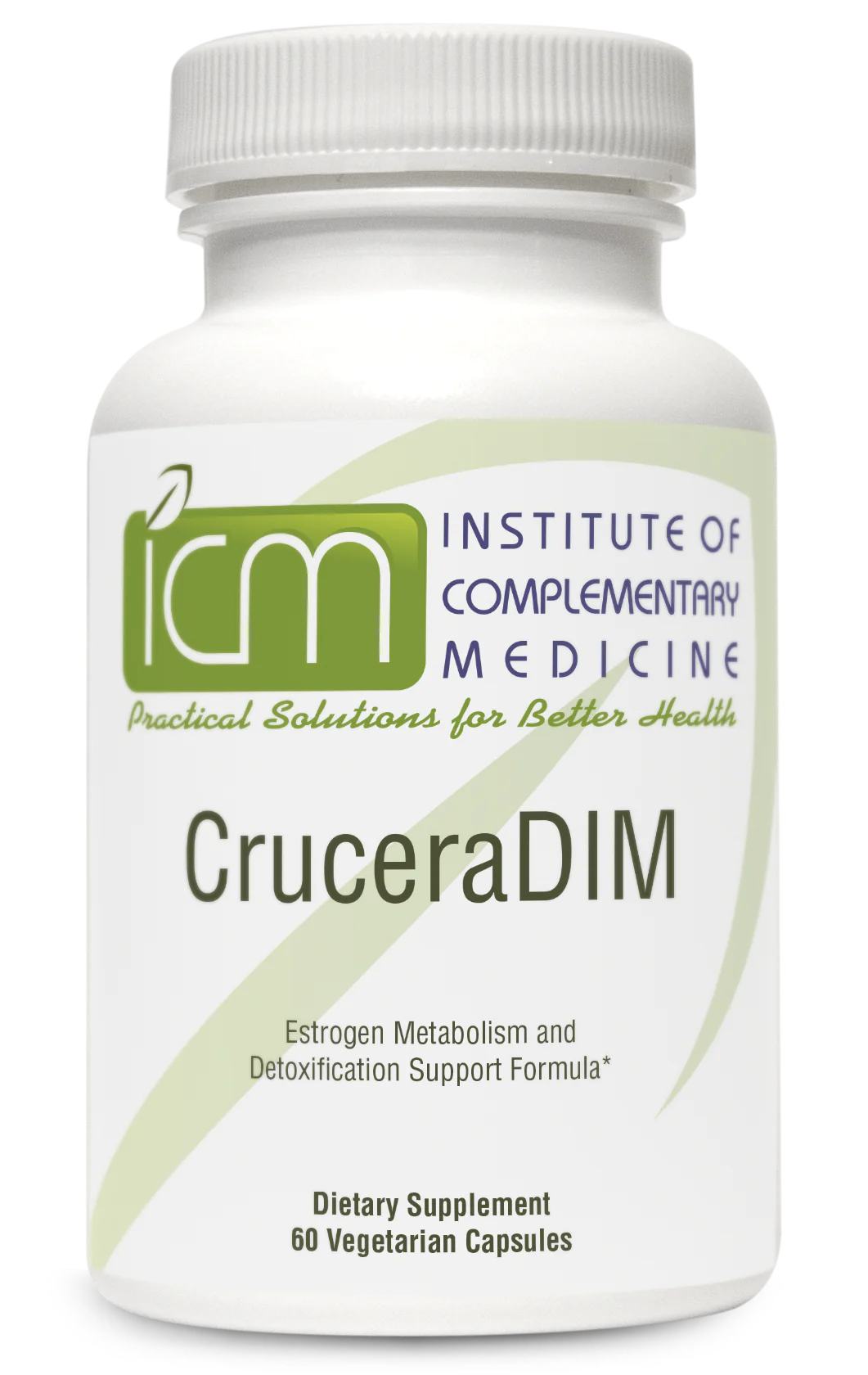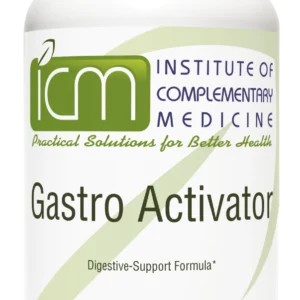Hormone Protect (CruceraDIM)
$55.50
CruceraDIM is an ideal combination of DIM (diindolylmethane) and TrueBroc® (glucoraphanin) that helps protect estrogen-sensitive tissues by promoting healthy estrogen metabolism and supporting detoxification and neutralization of harmful estrogen metabolites and xenoestrogens.*
Clinical Applications
• Supports Healthy Estrogen Metabolism*
• Supports a Healthy Ratio of 2-OH:16alpha-OH*
• Supports Detoxification of Estrogen Metabolites/Intermediates*
• Supports Cellular Health in Estrogen-Sensitive Tissues*
• Helps Protect Against Damaging Reactive Oxygen Species, DNA Damaging Electrophiles, and Cytokines
• Supports Antioxidant Activity with SGS*
Description
Hormone Protect uses a dual-action approach to supporting healthy estrogen-sensitive tissues. First, it provides diindolylmethane (DIM) to promote healthy estrogen metabolism and create a better balance of estrogen metabolites (2-OH, 4-OH, 16alpha-OH) through phase I cytochrome P450 enzyme induction and promotion of 2-hydroxylation. Second, the action of DIM is complemented by providing sulforaphane glucosinolate (SGS), which protects tissues from unrestrained oxidative stress and uniquely supports phase II detoxification of harmful estrogen metabolites (e.g., estrogen quinones) and xenoestrogens. These actions may be important for the health of estrogen sensitive tissues, such as those of the breast, uterus, cervix, and prostate.*
DIM (diindolylmethane) DIM is an advanced metabolite of indole-3-carbinol (I3C), the indole found in cruciferous vegetables. Supplementation with DIM is preferred over I3C due to I3C’s undesirable breakdown products, including the dioxin-like molecule indolo[3,2-b] carbazole (ICZ).[1] It has been established that DIM supplementation increases 2-hydroxylation of estrogen. This science has been validated in animal and human studies wherein supplementation with DIM was shown to increase the ratio of the protective, “good” 2-hydroxyestrone (2-OH) to 16alpha hydroxyestrone (16alpha-OH).[2,3] In a study of postmenopausal women, DIM-treated subjects, relative to placebo, showed an increase of 47% in 2-OH/16alpha-OH.[4] Studies further reveal that DIM may play a critical role in supporting normal cellular proliferation in estrogen-sensitive tissues.*[3,5,6]
Sulforaphane Glucosinolate (SGS) Sulforaphane is the aglycone breakdown product of glucoraphanin, a glucosinolate also known as SGS. The SGS broccoli seed extract used in CruceraDIM is a super vegetable that delivers extended antioxidant support and boasts a very high level of glucoraphanin (13%). Research suggests that when SGS is broken down to sulforaphane (its active form), it safely and effectively upregulates the Nrf2 system, activates the antioxidant response element (ARE), enhances the production of important antioxidants, and activates vital phase II detoxification enzymes.[7] These mechanisms provide protection from toxins, xenobiotics (e.g., xenoestrogens), and reactive intermediates formed after phase I detoxification.*
Neutralizing Reactive Estrogen Quinones with SGS According to Bolton et al, the oxidation of catechol estrogens (2-OH and 4-OH) via cytochrome P450 enzymes generates reactive electrophilic estrogen quinones and reactive oxygen species (ROS) through redox cycling.[8] Formation of quinones is largely minimized via phase II methylation, which produces methoxyestrogens. However, if methylation is suboptimal, estrogen quinones, which can cause DNA damage in estrogen-sensitive tissues, must be neutralized via other phase II enzymes such as quinone reductase. According to researchers, estrogen quinones are now recognized as a significant mechanism of estrogen-mediated cell damage.[8,9] A promising strategy to address their deleterious effects involves the use of agents to favorably shift the balance between phase I and phase II enzymes.[9] In fact, phase II enzymes such as quinone reductase, heme oxygenase-1 (HO-1), and glutathione S-transferase (GST) have been suggested as targets for reducing these highly reactive estrogen quinones.*
Sulforaphane has been identified as an agent that possesses the ability to potently induce phase II detoxification enzymes—including quinone reductase, HO-1, GST, and glutathione reductase—as well as to inhibit phase I enzymes involved in activation.[10-12] In the case of estrogen quinones, quinone reductase protects cells from oxidative damage by two-electron reduction, thus suppressing oxidative cycling and reactive oxygen species generation.[10] Sulforaphane consumption is associated with supporting cell-line health in humans, and animal research shows that sulforaphane metabolites can be found in target tissues, along with significant induction of quinone reductase and HO-1.[10] This research has exciting implications for supporting the health of tissues as it relates to reactive estrogen quinones formed after phase I activation of catechol estrogens (2-OH, 4-OH).*[10]
Directions
Take one to two capsules daily, or use as directed by your healthcare professional.
Consult your healthcare professional prior to use. Individuals taking medication should discuss potential interactions with their healthcare professional. Do not use if tamper seal is damaged.
Formulated To Exclude
Wheat, gluten, yeast, soy, animal and dairy products, fish, shellfish, peanuts, tree nuts, egg, ingredients derived from genetically modified organisms (GMOs), artificial colors, artificial sweeteners, and artificial preservatives.
*Follow recommended dosing or use as directed by your healthcare practitioner. Individuals taking medication should discuss potential interactions with their healthcare practitioner prior to use. These statements have not been evaluated by the Food and Drug Administration. These products are not intended to diagnose, treat, cure, or prevent any disease.






